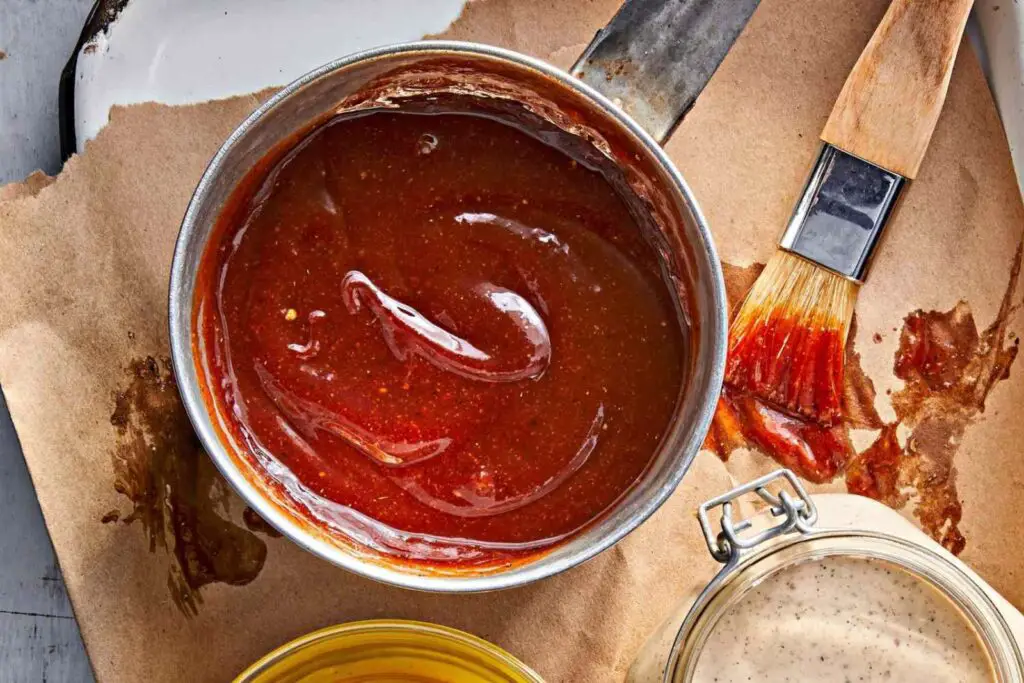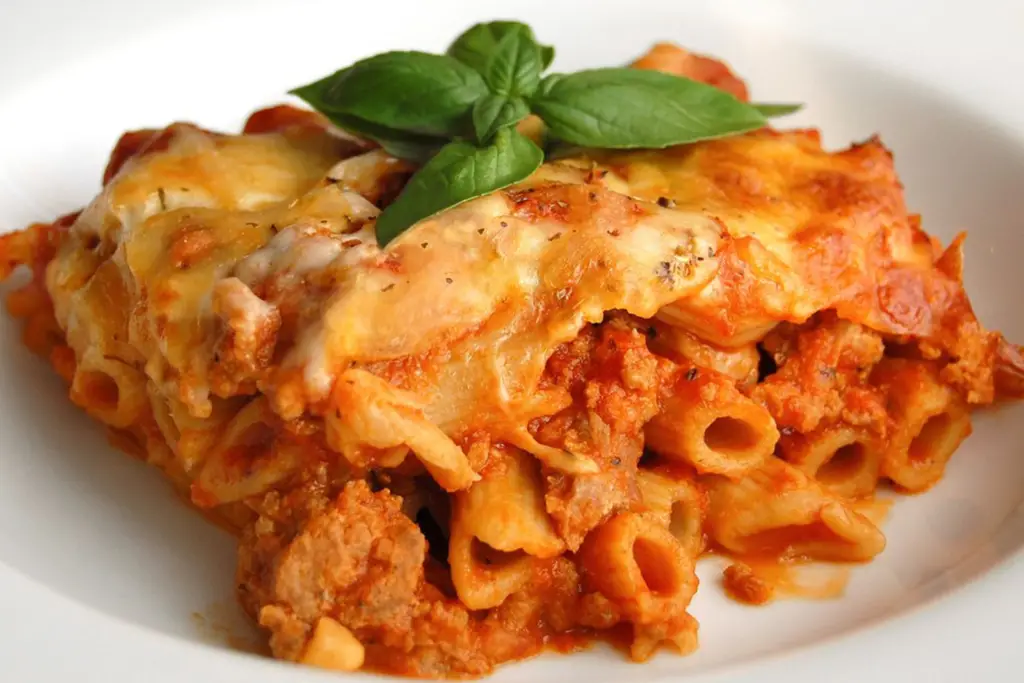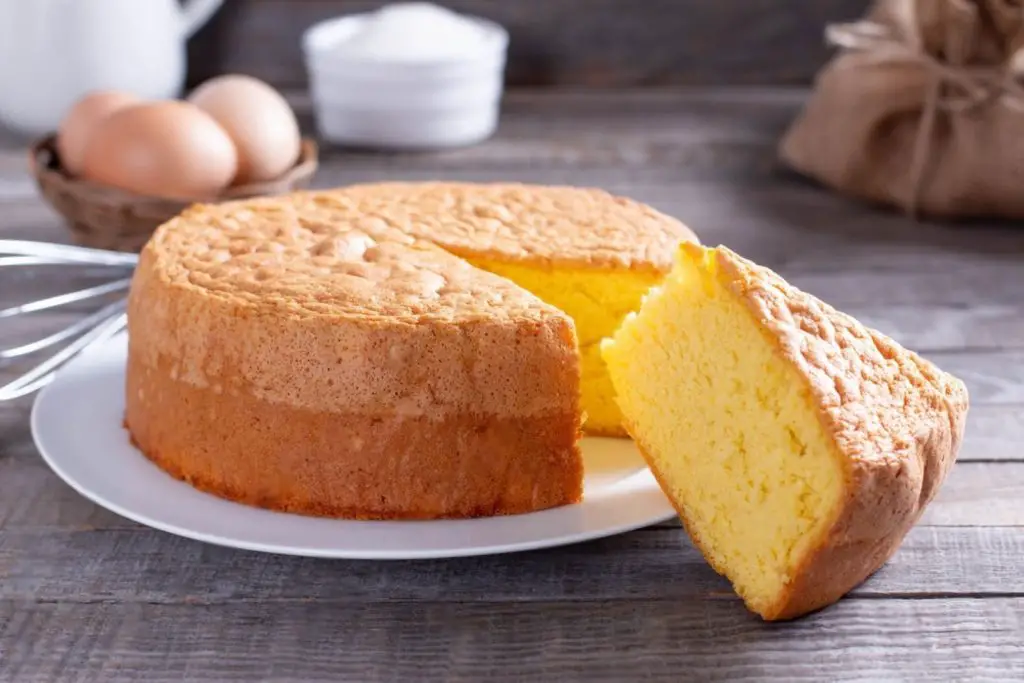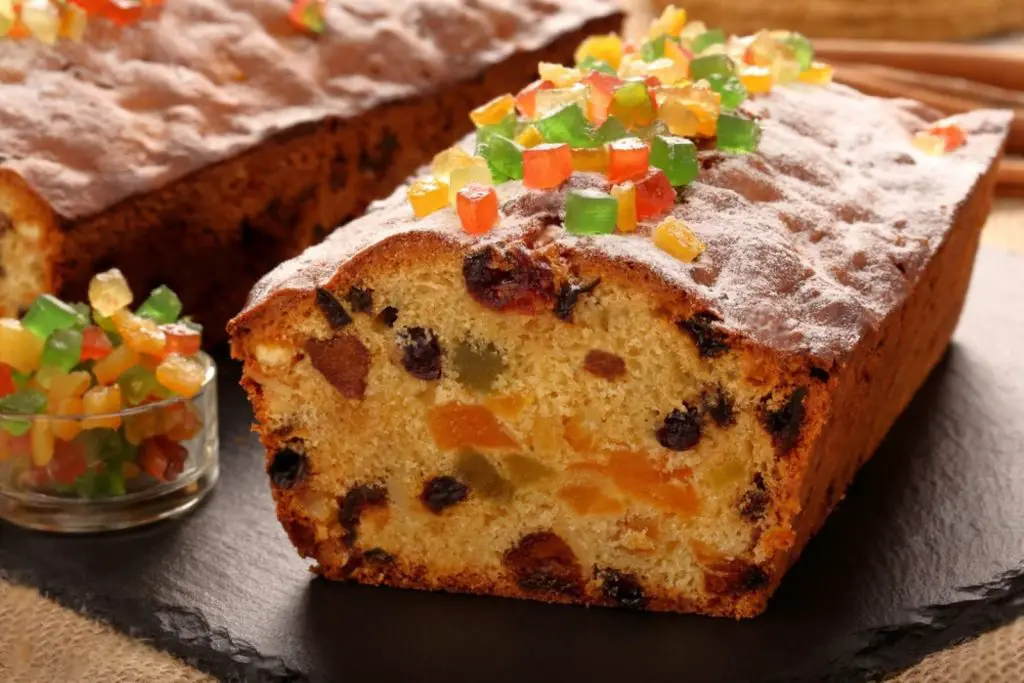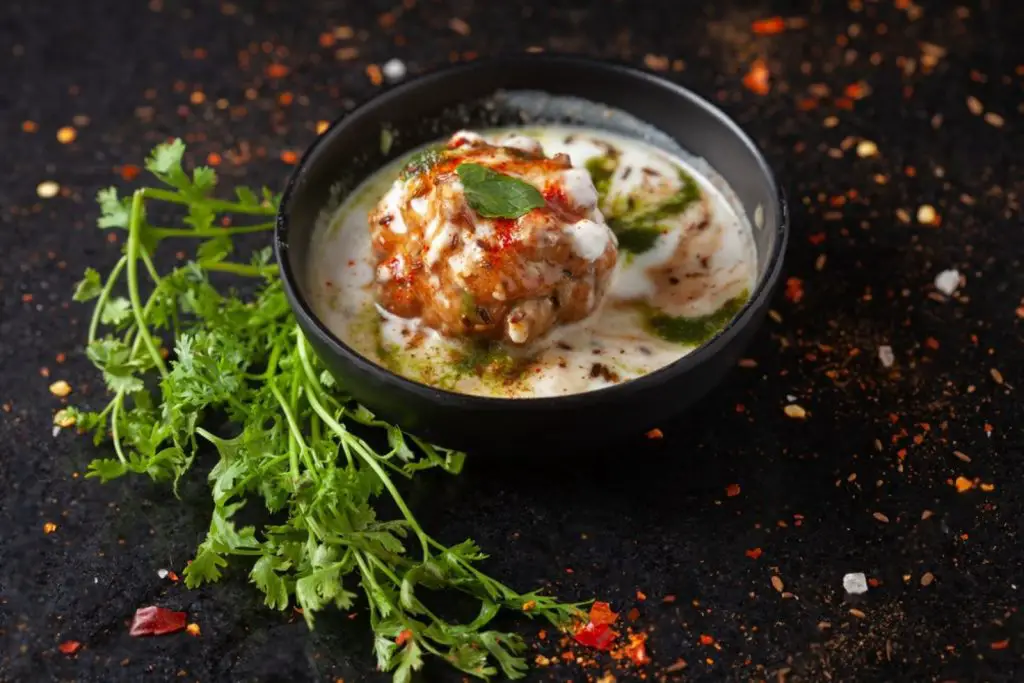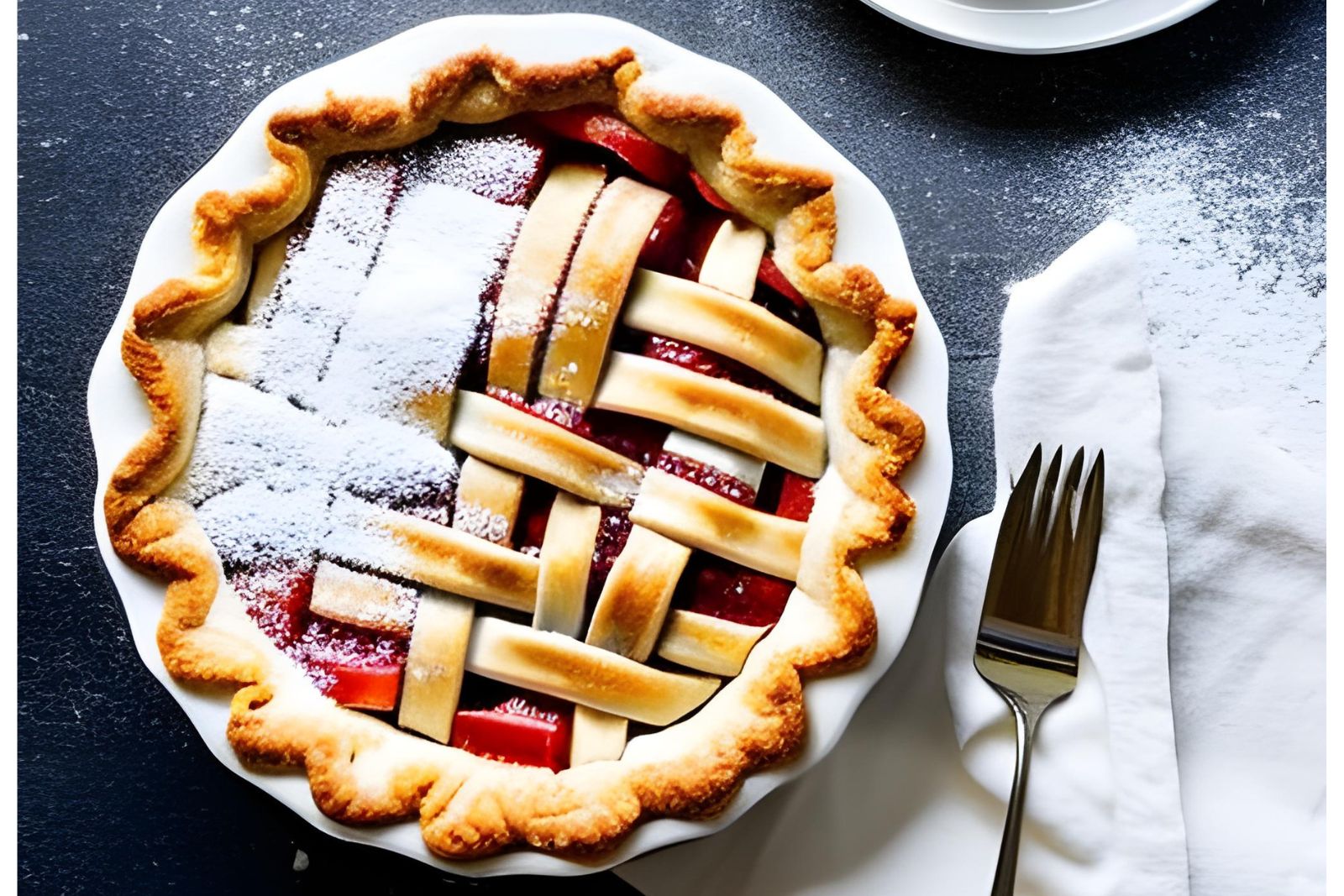
Rhubarb pie is a beloved dessert that perfectly balances the tartness of rhubarb with sweet flavors and a flaky crust. This classic pie showcases the vibrant red stalks of rhubarb, which soften during baking to create a delightful filling. Rhubarb pie is often enjoyed with a scoop of vanilla ice cream or a dollop of whipped cream. If you have an abundance of rhubarb or want to prepare this delectable pie in advance, freezing can be a convenient way to preserve its flavors and enjoy it later. Freezing rhubarb pie allows you to savor its tangy-sweet combination and enjoy the taste of summer even when rhubarb is out of season. In the following section, we will explore the process of freezing rhubarb pie and provide tips for maintaining its texture and taste after thawing.
Here are the steps to freeze rhubarb pie:
Step 1: Allow the rhubarb pie to cool down completely
After baking your delicious rhubarb pie, it’s important to allow it to cool down completely before proceeding with the freezing process. This step is crucial as it helps preserve the texture and flavor of the pie while also preventing condensation from forming inside the packaging, which can negatively impact its quality.
When a pie is taken out of the oven, its internal temperature is significantly higher than the surrounding room temperature. Allowing the pie to cool down gradually helps to balance the temperature difference and ensures that the crust and filling set properly.
To cool the rhubarb pie, start by removing it from the oven and placing it on a wire rack. The wire rack allows for better air circulation around the pie, facilitating even cooling. It’s important to avoid leaving the pie on a hot baking sheet or countertop, as this can trap heat and prevent proper cooling.
Let the rhubarb pie sit at room temperature until it reaches room temperature. This can take anywhere from 1 to 2 hours, depending on the size and thickness of the pie. Avoid rushing the process by placing the pie in the refrigerator, as the sudden drop in temperature can lead to condensation forming on the surface.
Remember, patience is key when it comes to cooling down your rhubarb pie. Once it has reached room temperature, you can proceed with the next steps of wrapping and freezing it to preserve its deliciousness for future enjoyment.
Should I bake the rhubarb pie before freezing it?
Yes, it is generally recommended to bake the rhubarb pie before freezing it. Baking the pie before freezing helps set the filling and ensures that it is fully cooked. Additionally, it allows for better texture and flavor once the pie is thawed and reheated.
Can I freeze a rhubarb pie if it has been refrigerated for a few days?
Yes, you can freeze a rhubarb pie that has been refrigerated for a few days, but it’s best to do so promptly to maintain its freshness. If the pie has been stored in the refrigerator for more than a couple of days, its quality may start to deteriorate, so freezing it can help extend its shelf life. Ensure the pie is properly wrapped and follow the steps for freezing a rhubarb pie outlined earlier.
Step 2: Decide on portion sizes
When it comes to freezing your rhubarb pie, it’s important to consider whether you want to freeze the entire pie or divide it into individual portions. The decision you make here can impact the convenience of thawing and serving the pie later on.
Freezing the entire pie as a whole can be a good option if you anticipate serving it in its entirety on a future occasion, such as a gathering or celebration. It maintains the integrity of the pie’s presentation and allows you to thaw and serve it as a complete dessert.
On the other hand, dividing the pie into individual portions before freezing offers greater flexibility. Freezing smaller portions makes it easier to defrost only what you need, allowing you to enjoy a single slice or serving at a time. This can be particularly beneficial if you have a smaller household or if you prefer to savor the pie gradually over multiple occasions.
To divide the rhubarb pie into individual portions, use a sharp knife to cut it into slices or portions of your desired size. It’s recommended to use a knife with a serrated edge to ensure clean cuts without damaging the pie’s crust or filling. Generally, pie slices are cut in a triangular shape, but you can adjust the size according to your preference.
If you choose to freeze the entire pie, you can skip this step and proceed with wrapping the pie as a whole. However, if you opt for individual portions, it’s essential to consider how many slices or servings you want to freeze. This will help you determine the appropriate portion sizes and ensure you have enough for future enjoyment.
Step 3: Wrap each portion or the whole pie tightly
To ensure that your rhubarb pie remains protected from freezer burn and maintains its delicious flavor during freezing, it is essential to wrap it properly. Whether you are freezing individual portions or the entire pie, the wrapping process plays a crucial role in preserving its quality.
If you have divided the pie into individual portions, start by wrapping each slice tightly in plastic wrap. The plastic wrap acts as a barrier against air exposure, which can cause freezer burn and affect the taste and texture of the pie. It’s important to wrap each portion snugly, making sure the plastic wrap is in direct contact with the pie’s surface. This helps to minimize the amount of air trapped inside the wrapping and maintains the integrity of the pie.
When wrapping the individual portions, ensure that the plastic wrap covers the entire exposed surface of each slice, including the crust and filling. This will help prevent moisture loss and keep the pie’s flavors intact.
On the other hand, if you have decided to freeze the entire pie as a whole, wrap it entirely in plastic wrap. Start by placing the pie on a sheet of plastic wrap and carefully fold the wrap over the top, making sure it covers the entire pie. Then, wrap the sides and bottom of the pie, ensuring a tight and secure seal. Wrapping the whole pie helps to maintain its shape and protect it from freezer odors.
By tightly wrapping each portion or the whole pie in plastic wrap, you create a protective layer that prevents air and moisture from reaching the pie’s surface. This minimizes the risk of freezer burn and helps preserve the pie’s flavor and texture while it is stored in the freezer.
Remember to handle the pie with care while wrapping to avoid damaging the crust or disturbing the filling. Taking the time to wrap each portion or the entire pie properly will pay off when you’re ready to thaw and enjoy your rhubarb pie in the future.
Step 4: Wrap the plastic-wrapped pie in aluminum foil
Once you have tightly wrapped your rhubarb pie in plastic wrap, the next step is to provide an additional layer of insulation by wrapping it in aluminum foil. This extra layer of protection helps to create a barrier against moisture and temperature changes, ensuring that your pie remains well preserved during freezing.
Aluminum foil is an excellent material for wrapping frozen foods because it provides a sturdy and durable outer layer. It helps to maintain the integrity of the pie by preventing any damage or crushing during storage in the freezer.
By wrapping the plastic-wrapped pie in aluminum foil, you create a double barrier that further shields the pie from moisture. Moisture can lead to the formation of ice crystals, which can affect the texture and quality of the pie. The aluminum foil helps to minimize moisture absorption and reduce the risk of freezer burn, which can negatively impact the flavor and overall enjoyment of the pie.
Additionally, aluminum foil offers insulation against temperature changes. Fluctuations in temperature inside the freezer can cause condensation and affect the pie’s consistency. The foil acts as a protective shield, helping to maintain a more stable temperature around the pie, and reducing the chances of any temperature-related issues.
When wrapping the pie in aluminum foil, ensure that it covers the entire plastic-wrapped surface, including the edges and sides of the pie. It should fit snugly but not be too tight to avoid crushing the pie. Make sure to seal the edges of the foil securely to prevent any air or moisture from entering the wrapping.
Step 5: Label and date the package
Labeling and dating the package containing your frozen rhubarb pie is an essential step in the freezing process. This simple act will help you avoid confusion in the future, allowing for easy identification of the pie and ensuring that you can keep track of its storage time accurately.
To label the package, use a permanent marker or a freezer-safe label. Write down the contents, which in this case is “Rhubarb Pie,” on the label or directly on the package itself. Be sure to use clear and legible handwriting to prevent any misunderstandings.
In addition to labeling the contents, it is equally important to include the date of freezing. Write down the date when you placed the pie in the freezer. This information allows you to keep track of how long the pie has been frozen and helps you prioritize its consumption based on freshness.
By labeling and dating the package, you create an organized system for your frozen foods. This way, when you open your freezer, you can easily locate and identify the rhubarb pie without any confusion. It saves you time and effort, especially if you have multiple items stored in the freezer.
Furthermore, knowing the date of freezing enables you to manage your frozen rhubarb pies effectively. Over time, frozen foods can lose their quality and flavor. By having the date clearly marked, you can prioritize consuming the pie within the recommended storage period to ensure the best taste and texture.
Remember to use a marker or label that is specifically designed for freezer use. This ensures that the label remains intact and legible throughout the freezing period, even in the cold and humid environment of the freezer.
Step 6: Place the wrapped pie in the freezer
After properly wrapping and labeling your rhubarb pie, the final step is to find a suitable spot in your freezer and carefully place the wrapped pie inside. Proper placement is crucial to ensure the pie remains protected and maintains its shape during freezing.
When choosing a spot in the freezer, look for a flat and stable surface. Placing the pie on a flat surface helps it retain its shape and prevents any potential deformation or damage to the crust or filling. Avoid positioning the pie near the freezer door or in an area where it may be easily disturbed or bumped when retrieving other items.
It’s important to ensure that the pie is not pressed down by any heavy items in the freezer. Heavy objects can cause the pie to become misshapen or flattened, compromising its appearance and potentially damaging the crust. If necessary, rearrange items in the freezer to create a dedicated space for the pie where it won’t be subjected to unnecessary pressure.
If you are freezing multiple items alongside the pie, try to leave some space around it. Sufficient air circulation helps maintain a more consistent temperature, preventing any potential hot spots that could affect the freezing process. This also aids in preserving the overall quality of the pie.
Additionally, make sure that the pie is not in direct contact with any uncovered or strong-smelling foods in the freezer. Odors from other foods can transfer to the pie, affecting its flavor and aroma. If needed, you can place the pie in a sealable freezer bag before placing it in the freezer to provide an extra layer of protection against any potential odor contamination.
With the completion of this step, your rhubarb pie is now safely stored in the freezer, and you can look forward to savoring its delightful flavors and textures at a later time.
What is the ideal freezing temperature in freezing rhubarb pie?
The ideal freezing temperature for rhubarb pie is 0°F (-18°C) or below. Freezing at this temperature ensures optimal preservation of the pie’s quality and helps prevent the growth of bacteria. It is important to set your freezer at this recommended temperature to maintain the texture, flavor, and overall integrity of the rhubarb pie during its time in the freezer.
Other related questions
How do I defrost rhubarb pie properly?
To defrost a rhubarb pie properly, it’s important to do it gradually in the refrigerator. Place the frozen pie in its packaging on a plate or a shallow dish to catch any potential moisture. Allow the pie to thaw in the refrigerator for 24 to 48 hours, depending on its size. Once fully thawed, you can either enjoy the pie chilled or reheat it in the oven at a low temperature for a warm and fresh-from-the-oven experience.
How long can I freeze a rhubarb pie?
You can freeze a rhubarb pie for up to 3 months without significantly compromising its quality. After this time, the pie may start to lose its texture and flavor. It’s best to consume the pie within the first 3 months for the best taste and overall enjoyment. Proper packaging and storage in a freezer set to 0°F (-18°C) or below will help maintain the pie’s quality throughout the freezing period.
Can I refreeze rhubarb that has been thawed previously?
It is generally not recommended to refreeze rhubarb that has been previously thawed. The freezing and thawing process can affect the texture and quality of the rhubarb, causing it to become mushy and lose its flavor. Additionally, each freeze-thaw cycle increases the risk of bacterial growth and foodborne illness. It is best to use the thawed rhubarb promptly or incorporate it into a recipe before freezing to maintain its optimal taste and texture.
How do I know if my frozen rhubarb pie has gone bad?
To determine if your frozen rhubarb pie has gone bad, use your senses to assess its condition. First, check for any signs of freezer burn, such as discoloration or dry, leathery patches on the crust or filling. Next, inspect for mold or unusual odors. If the pie exhibits any of these signs, it is likely spoiled and should not be consumed. Lastly, if the texture of the pie has significantly deteriorated or if it tastes off, it is best to discard it to avoid any potential foodborne illness.
Can I use frozen rhubarb pie with the fresh ones?
Yes, you can use frozen rhubarb pie alongside fresh ones. However, keep in mind that there might be differences in texture and consistency between the two. The frozen pie may have a slightly softer texture due to the freezing and thawing process. When serving both fresh and frozen pies together, it’s a good idea to inform your guests or family members about the distinction. Ultimately, it’s a matter of personal preference whether you choose to combine the frozen and fresh rhubarb pies or serve them separately.
Can I freeze a rhubarb pie with a lattice crust?
Yes, you can freeze a rhubarb pie with a lattice crust. Before freezing, make sure the lattice crust is well-secured and properly baked to maintain its structure. Follow the steps for wrapping and packaging the pie, ensuring that the lattice crust is covered and protected to prevent any damage during freezing and thawing.
Can I freeze a rhubarb pie that contains other fruits or berries?
Yes, you can freeze a rhubarb pie that contains other fruits or berries. The freezing process is suitable for pies with mixed fruit fillings. Just ensure that the other fruits or berries in the pie are suitable for freezing, as some fruits may have different freezing requirements. Properly wrap and package the pie, following the same steps as for freezing a regular rhubarb pie.
Can I freeze a rhubarb pie that has a custard or cream filling?
Freezing a rhubarb pie with a custard or cream filling is not recommended. Custard and cream fillings have a high moisture content, which can lead to a loss of texture and separation during the freezing and thawing process. Freezing can cause the filling to become watery and result in a less desirable consistency. It’s best to enjoy pies with custard or cream fillings fresh or refrigerate them for short-term storage.
Can I freeze a rhubarb pie with a meringue topping?
It is not recommended to freeze a rhubarb pie with a meringue topping as the meringue can become rubbery and lose its texture when frozen and thawed. It is best to freeze the pie without the meringue and add it after reheating if desired.
Can I freeze a rhubarb pie that has been decorated with whipped cream?
It is not recommended to freeze a rhubarb pie with whipped cream, as the cream may not retain its texture and may become watery upon thawing. It’s best to add whipped cream to the pie just before serving.

